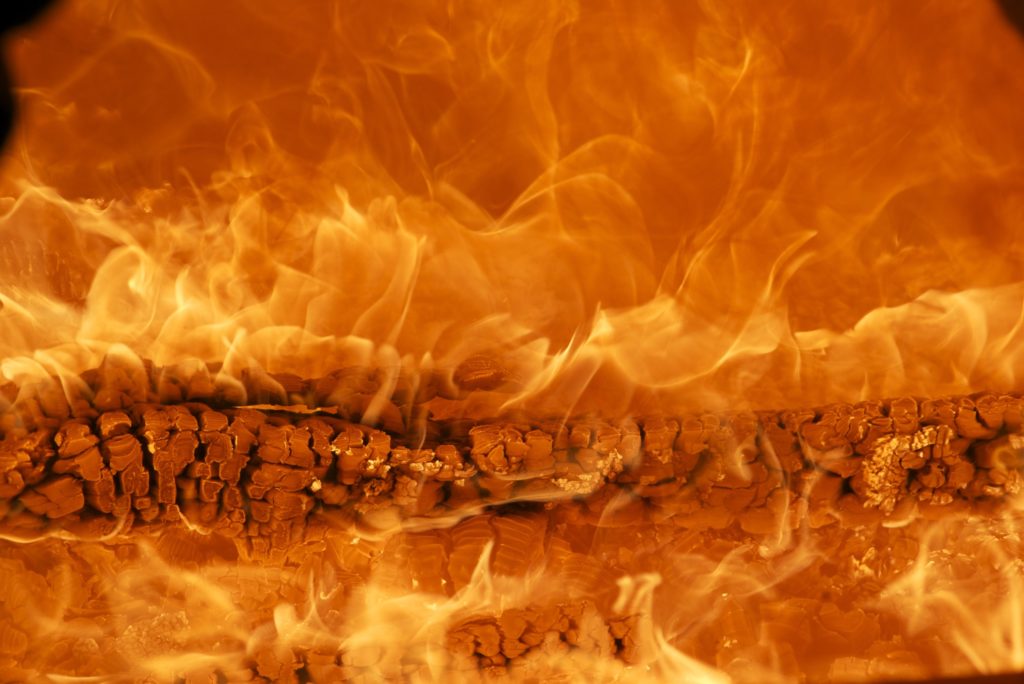the element of fire as a force of nature
When I think of fire the song Come on baby light my fire reverberates in my memory. I can hear Jim Morrison’s thundering cry. Fire is passion, romance and the spark of creation. It is rage, anger and it illuminates. It is our protector and our nemesis. It warms our bodies, gives us light in the darkness, detracts predators, cooks our food and has been a guiding force for us throughout history.
Fire is a friend and foe to a variety of species.
Fire in some areas of the world is part of the natural cycle of life. Fire enables many plants to complete their life cycles, creates habitats for a wide range of animals and maintains a diversity of ecosystems. Some species have even adapted to particular patterns of fire. For example, some plants release seeds into the resulting ash-rich with nitrogen and potassium covering the ground after a fire.

Humans relationship with fire ranges from the divine to the profane.
Scientists cannot agree on when our ancestral family, AKA hominins, first started to use controlled fire. At least two archeological sites promote the theory that we began to use it anywhere from 1.6 – 2 million years ago. Does it matter when? Not really. Through the years, humans have used it towards positive aims and in unsavoury ways – from the divine to the profane.

Fire management is being and has been used by humans in a variety of ways throughout history. Some positive uses of fire are for signalling, propulsion and the incineration of waste, or through ceremonies and rituals – including cremation of our bodies. We use it as a tool to smelt and forge and, we manage its use.
Sustainable fire use and management practices allow communities to gather resources, prosper and pass on knowledge. These might include controlled burning to create paths, smoking bees before collecting honey, or even stimulating specific varieties of trees to fruit.
Planned and strategic use of fire can include the seasonal control of fire during dry seasons or in small scale rotational farming and hunting.
- Seasonal control of fire is where small areas are burnt at different times during dry seasons. The result is a patchwork of burnt and unburnt parcels that can act as natural firebreaks to limit its spread, thereby protecting important areas such as forests, farms and homes.
- In small-scale rotational forest farming – plots are cut, burned and planted for several years and then left to regenerate before returning to the rotation. The cycling of ash back into the soil provides nutrients for the next season’s plantings.
- In fire-prone savannas, brush fires have been moderated and regulated as Indigenous people use fire to drive and trap game and other animals. In other cases, it is used to clear the tall grasses increasing visibility and access to hunting.
Fire is creator and destroyer.
The dark side…of human beings and fire
The notion of fire as a destroyer isn’t lost to humans who have intentionally used it to destroy other humans and their environments.
Humans with our sometimes abhorrent nature have used it as a weapon of destruction directly by firebombing others with items like Molotov cocktails or on a massive scale through atomic (Hiroshima, Nagasaki) and chemical warfare (Vietnam). With the herbicide Agent Orange, delivery of this dioxin often made the land susceptible to fire. On a smaller scale, acts of arson use fire to destroy buildings, kill people or even cover up evidence of a crime.
Fire deserves respect.
Fire management is becoming more difficult as human beings’ carelessness is the cause of more fires through the years. In the United States, human ignition is responsible for 84% of all wildfires and 97% of all those that threaten homes. The damage and number of fires have increased due to human activity. That includes fires set by humans and the residual effects that global warming has on the environment.
Fires set by human beings create more havoc and devastation than the seasonal fires that are caused by arid conditions and lighting storms. Combine this with rapid climate change, caused by our collective and complicit – even though they may be at times unconscious actions due to our disconnection with nature – has made it more difficult for recovery. In Australia, there are still 119 species still struggling after the black summer of fire in 2019.
Ecosystems and habitats that have never been fire-prone or fire-adapted are burning. Studies are underway to measure the changes that are already threatening species with extinction and transforming terrestrial ecosystems.
Most people in their daily life aren’t focusing on or thinking of these things, that is why awareness is so important. This brings me to Bernie Krause’s work, a soundscape ecologist who has been recording the sounds of nature for nearly 50 years. His work has been featured in museum’s around the world, in Ted Talks and elsewhere.
He has the largest archive of nature’s sounds in the world and uses them to chart how the sounds of life have changed over the years due to climate change and its resulting droughts and fires. In 2015 he noticed that sounds once heard – the symphony of nature was becoming quiet. He calls it the Silent Spring. Listen to this story observation of the dying sounds of nature in this short video.
His work provides us with one of the most telling ways to understand our disconnection with nature and the gravity of the current environmental crisis we face today.
You can also listen to a more in-depth interview with him where he discusses how fire is wiping out the orchestration of nature in Northern California. He digs in further to discuss how our disconnection from the sounds of nature and isolation begin during medieval times when churches took over and created an isolated cavern of sound.
In closing
Harnessing the power and light of fire is truly a gift to humanity. But it seems like we’re mesmerized by an artificial flame. When we consider ourselves as members of distinct nations with economic interests, we are working against our own self-interest – survival in the long term. Minimizing or ignoring global warming and climate change for temporary pleasure endangers every species that inhabits this world. Solving real-world problems as an international community that addresses these communal problems as a collective is a necessity. Efforts to reduce greenhouse gas emissions and limit global warming are critical to reducing the risk of extreme fire events.
You can read more about fire in part II.

